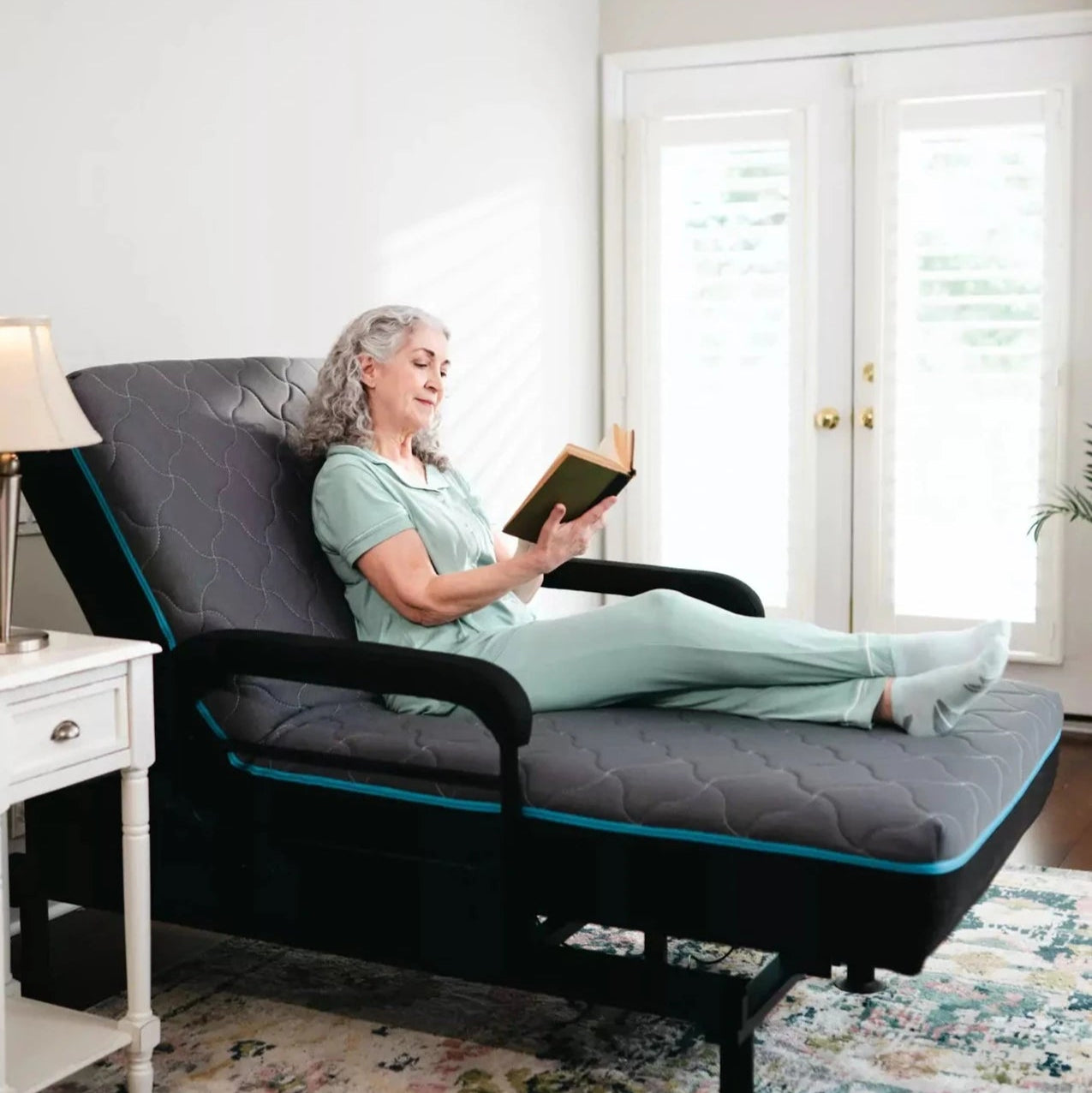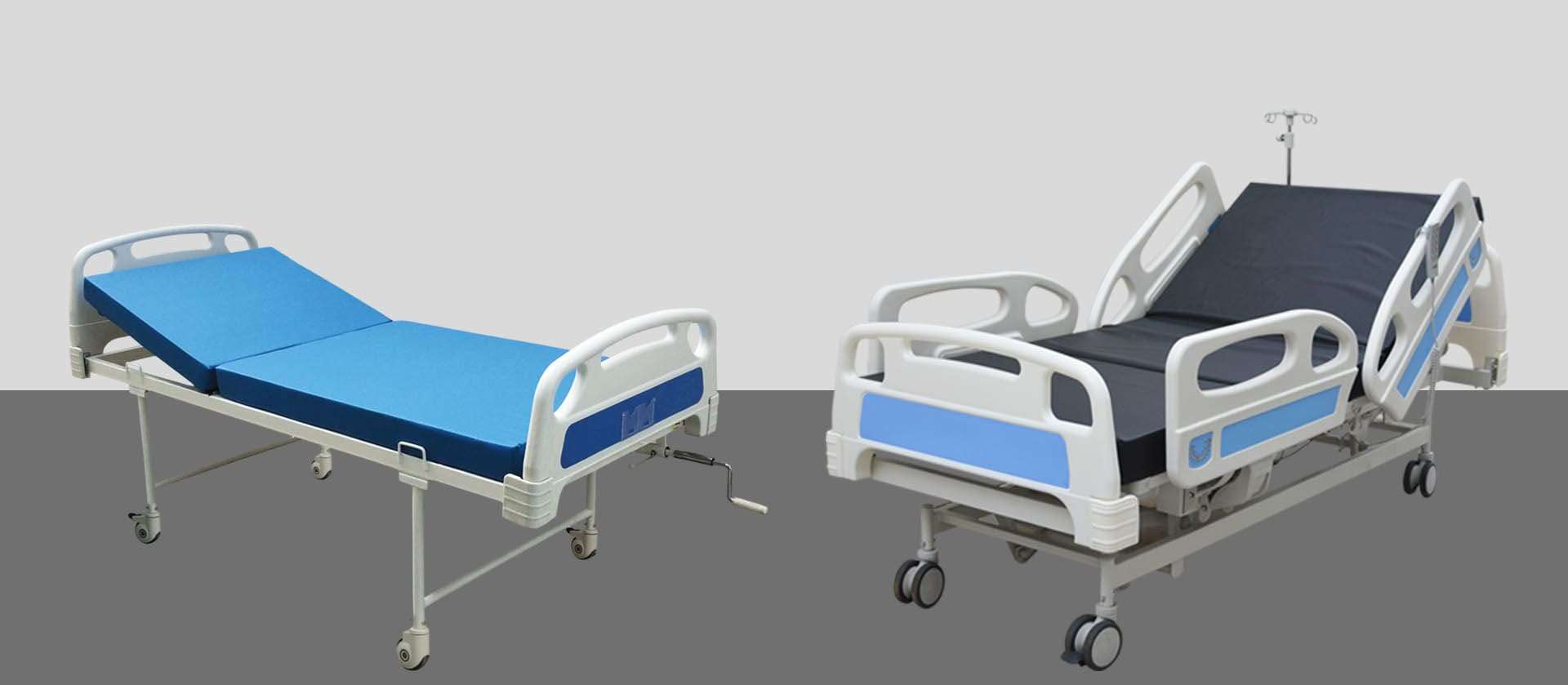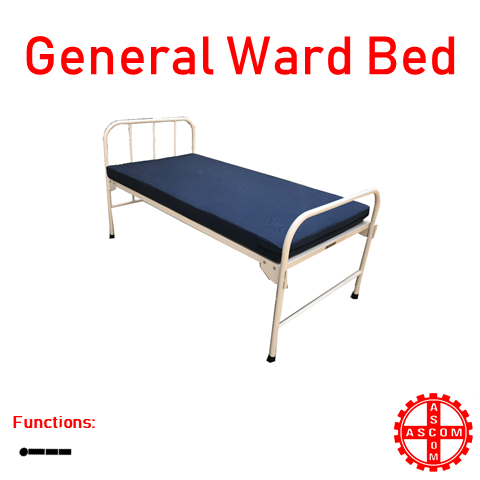Some Known Incorrect Statements About Hospital Beds For Home Use
Some Known Incorrect Statements About Hospital Beds For Home Use
Blog Article
The Single Strategy To Use For Hospital Beds For Home Use
Table of ContentsThe Basic Principles Of Hospital Beds For Home Use More About Hospital Beds For Home UseGetting The Hospital Beds For Home Use To WorkHospital Beds For Home Use Can Be Fun For AnyoneSee This Report about Hospital Beds For Home UseExamine This Report on Hospital Beds For Home UseA Biased View of Hospital Beds For Home Use
There are 3 main types of healthcare facility beds: manual, semi-electric, and fully-electric. These beds utilize hand cranks to change the bed's elevation and elevate and lower the head and the foot.
Semi-electric beds have an electric motor to increase and reduce the head and foot portions of the bed. Patients and caregivers change the positioning by pressing buttons utilizing a hand pendant. The height of the bed is changed manually with a hand crank. Full-electric beds have an electric motor that can increase the head and foot sections of the bed as well as the entire height and positioning of the bed.
Hospital Beds For Home Use for Dummies
Some versions can likewise relocate into even more settings, such as the Trendelenburg (tilt) position. There are a number of kinds of healthcare facility beds, each developed to meet details individual needs. Below are some typical kinds: This is the most usual kind of hospital bed, made for general clinical use. It has a guidebook or electrically adjustable headrest, foot rest, and height.
Lower to the ground than a standard bed. This type of bed is made for larger individuals, with a wider framework and greater weight capacity than a conventional bed. This kind of bed is developed especially for children, with smaller dimensions than a typical bed. Special functions such as complete size side rails and animation style.
This kind of bed is created for seriously unwell patients who require open tracking and specialized medical devices such as ventilators and mixture pumps. This kind of bed is made for usage during labor and delivery, with adjustable positions and functions to sustain the mommy and child throughout the birth procedure.
Top Guidelines Of Hospital Beds For Home Use
Several feature and the devices carry out expanding traction to various parts of the vertebra and the extremities without moving the body. These are simply a few instances of the sorts of health center beds readily available. The certain kind of bed used will certainly depend upon the client's condition, clinical needs, and various other aspects.
Right here is the important things you require to know. A one-function hospital bed is a clinical bed that enables an individual to move just the head or foot section up or down. A 2 feature medical facility bed normally refers to a kind of medical bed that has 2 adjustable features to help people in healthcare facilities or care centers.

Unknown Facts About Hospital Beds For Home Use
A 7-function ICU bed is a sort of medical pop over to these guys bed that supplies a number of adjustable features to sustain seriously ill individuals in an extensive treatment device (ICU) (hospital beds for home use). The 7 features typically include: Backrest change: The back-rest can be readjusted to numerous angles to aid the person rest up or rest pleasantly
Elevation modification: The bed can be increased or reduced to make it much easier for individuals to get in and out of bed, and for caregivers to offer care. Trendelenburg placement: The whole bed can be slanted to promote blood flow and circulation in the body. Reverse Trendelenburg placement: The bed can additionally be slanted in the opposite direction to advertise blood flow and flow in the upper body.
While more economical than electric versions, these beds need exertion for changes. The primary advantages of hand-operated beds are their cost and reliability, as they don't rely on electrical energy. The demand for hands-on initiative can be a restriction in situations where quick adjustments are needed or where caretakers face physical obstacles.
What Does Hospital Beds For Home Use Do?
They are appropriate for individuals that require very little repositioning for convenience or clinical requirements. Semi-electric medical facility beds offer a balance of manual and electrical controls. The head and foot sections are generally changed with electrical controls, while the elevation is readjusted by hand. These beds provide an optimal happy medium in between guidebook and totally electrical options, offering ease of use without the full cost of electric models.
Semi-electric beds are well-suited for people that require modest modifications to the head and foot sections but can take care of without constant elevation modifications. This makes them an economical option for those seeking comfort and convenience without the demand for consistent repositioning. Completely electrical hospital beds feature electric controls for seamless adjustments to the elevation, head, and foot sections.
Specialized health center beds, such as ICU beds, lasting care beds, and bariatric beds, are carefully made to attend to particular medical needs. These beds supply customized take care of varied client groups, boosting both outcomes and convenience. In the complying with areas, we will discover the primary kinds of specialized hospital beds, detailing their particular advantages and applications.
With years of experience in producing electrical linear actuators - hospital beds for home use and close cooperation with the healthcare sector, TiMOTION is well-positioned to offer reliable healthcare services. Our up and down integrated business takes care of every step of the production procedure, from design to actuator setting up, ensuring we provide exceptional worth and tailored services customized to your specific requirements
An Unbiased View of Hospital Beds For Home Use

To read more about incorporating these technologies right into your products, contact us today. More reading:.
Information is sourced his comment is here from the Medicare Cost Report. Accessed January 2025. Temporary acute care hospitals have the greatest ordinary number of beds at 187. They are the most common kind of health center in the U.S. and comprise greater than 50% of united state medical facilities. Kid's hospitals have 178 beds on standard and VA hospitals typical 175 beds.

Getting My Hospital Beds For Home Use To Work
A hospital bed is a bed made especially for clinical purposes. important site It is not just an area for individuals to rest, however additionally a platform for clinical procedures. Unlike average home beds, health center beds generally have flexible features, which can facilitate clinical personnel to make various changes according to the requirements of clients, such as changing the elevation, inclination, and assistance angle of the back and legs of the bed.
Report this page